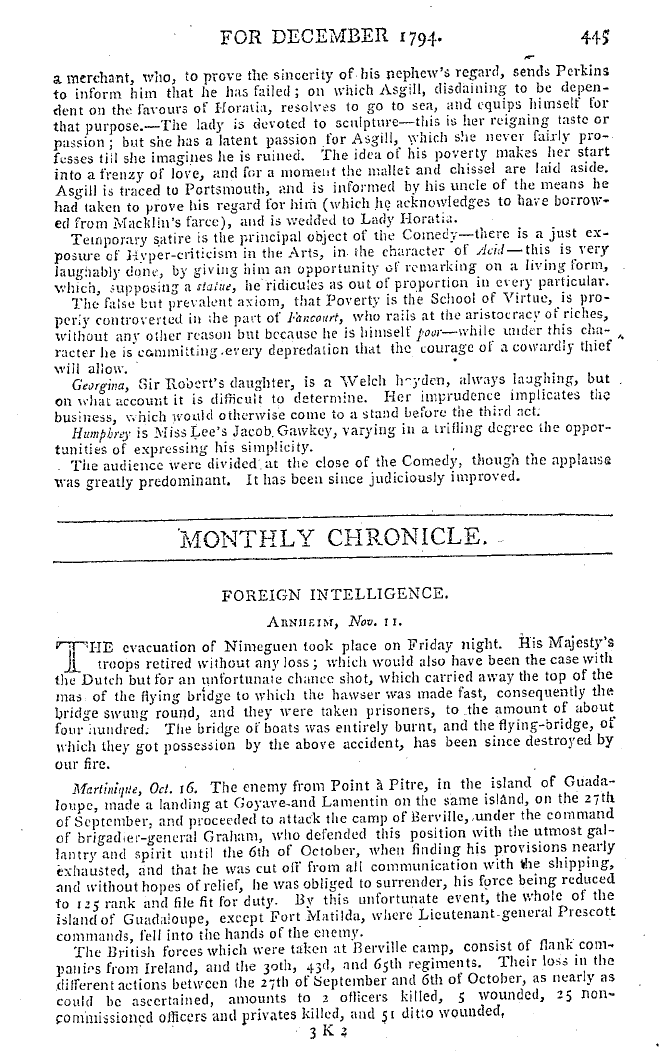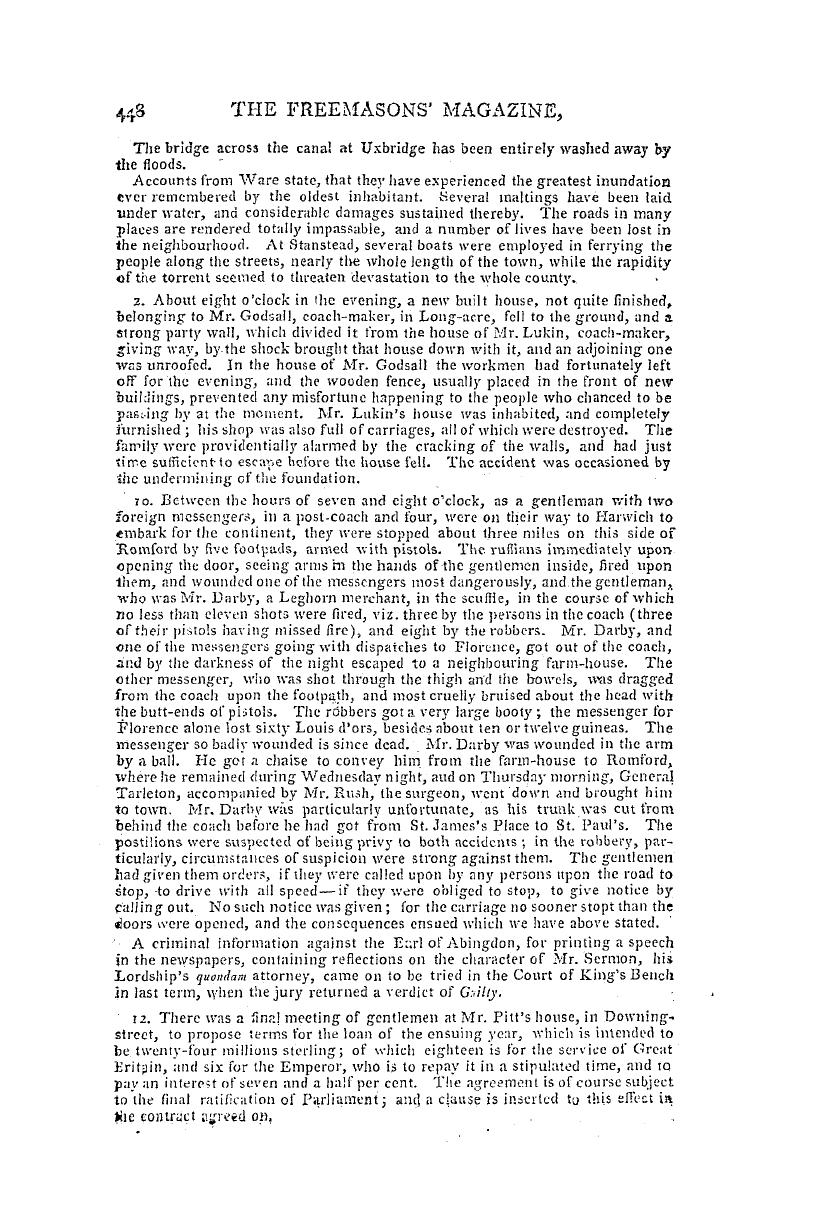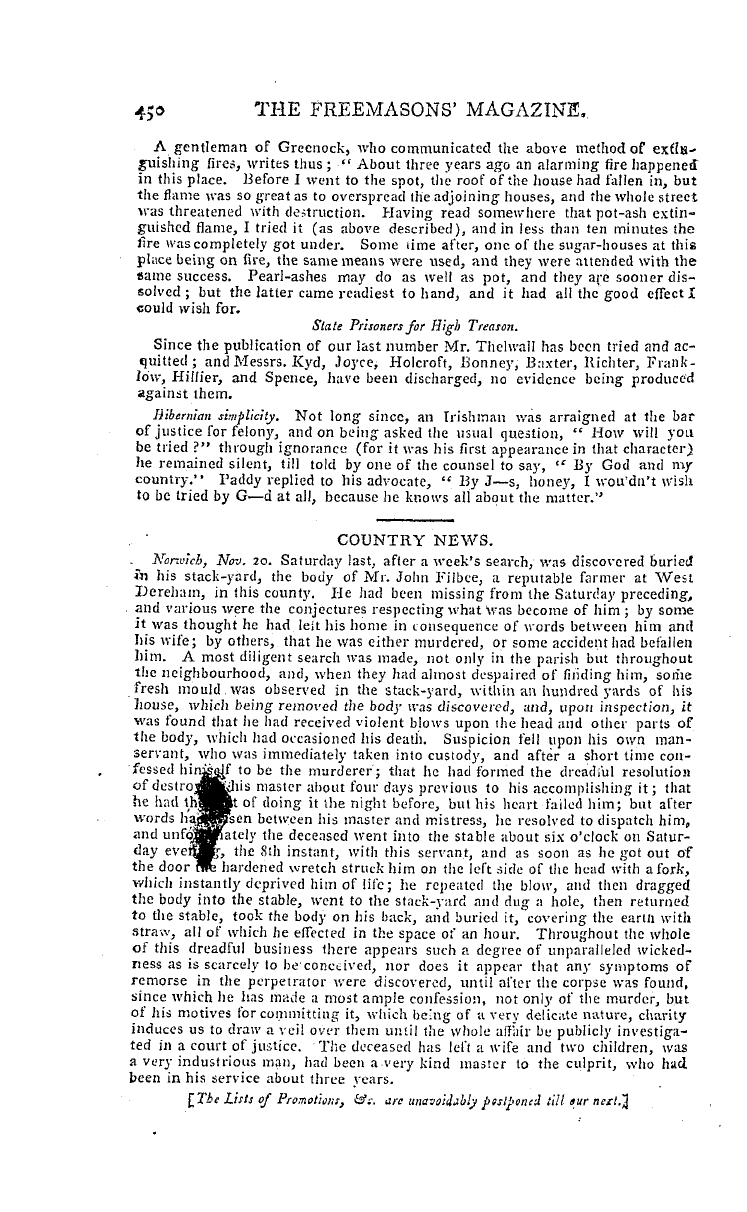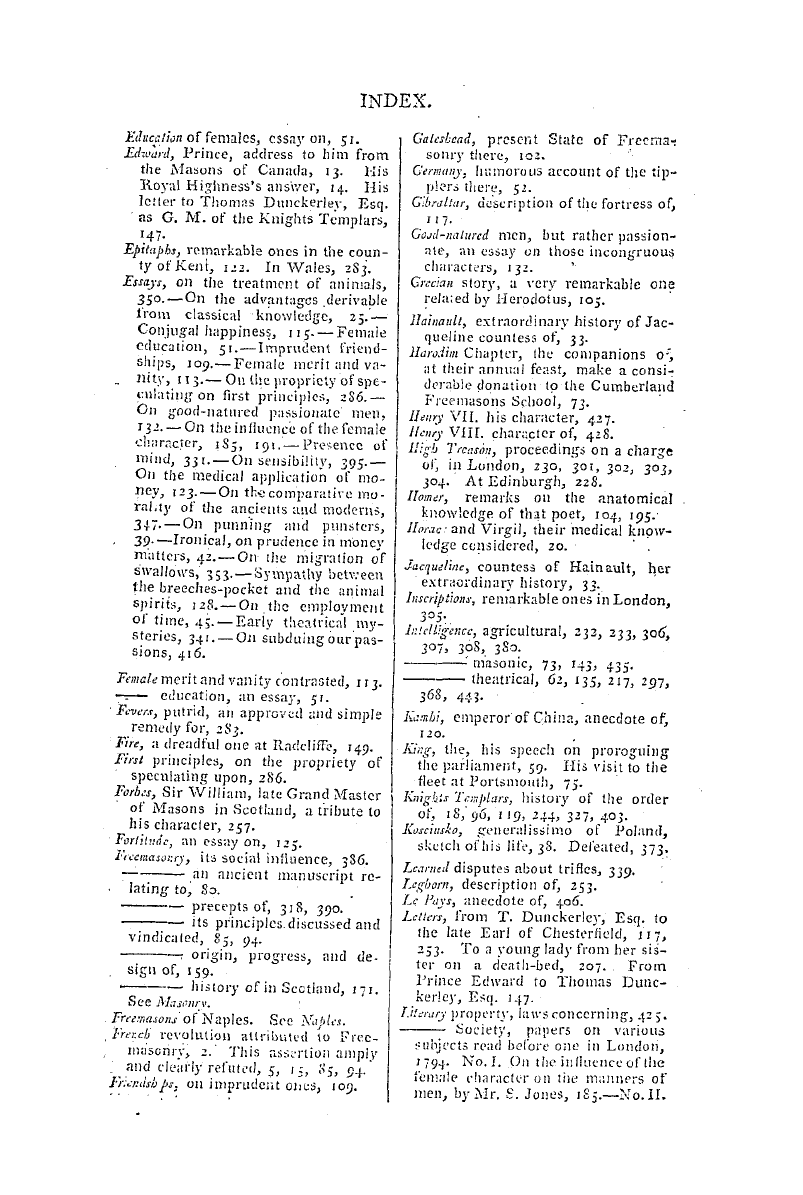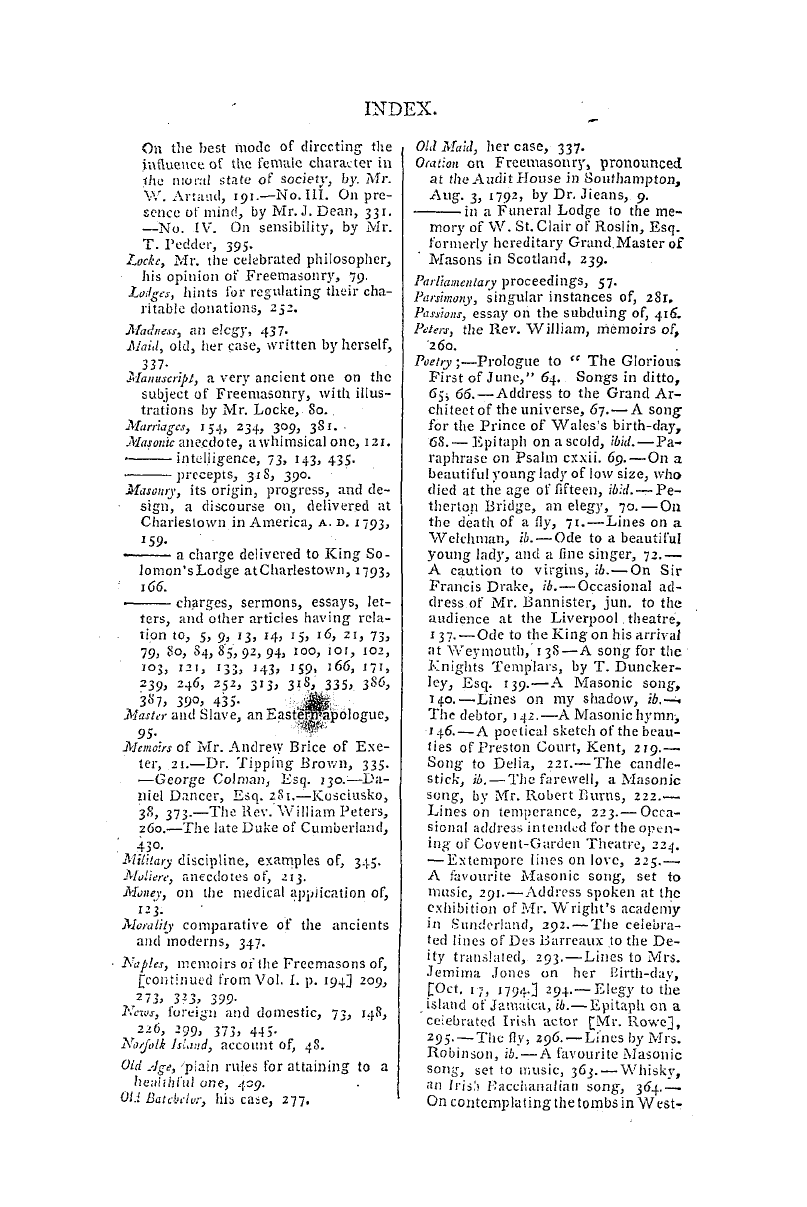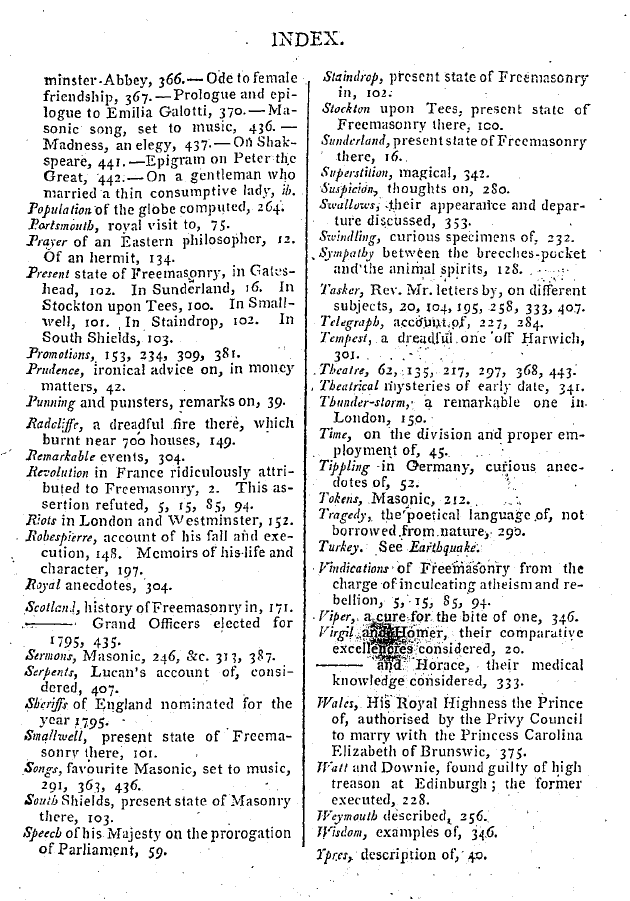Note: This text has been automatically extracted via Optical Character Recognition (OCR) software.
Experiments Illustrating The Properties Of Charcoal.
hunous matter from the water , whereas upon salts the charcoal has ' no effect . 12 . Salt of hartshorn is rendered uncommonly white on being well triturated with an equal quantity of charcoal powder , and put into a retort so as to fill it halfway up . Tue remaining space within the ietortistobefilled up with coarsety-pounded charcoal , and the whole
is then to be subjected to distillation . 13 . In the purification of common ardent spirits by means of charcoal , without the help of distillation , if too little charcoal powder be added , the spirits will always retain a blackish turbid appearance . But this black matter may be instantly and entirely separated from the spirits by the addition of salt of tartarin such quantity as is
suf-, ficient for it to form with the water which it attracts from the spirits a distinct fluid . As soon as the separation of the watery from the spirituous parts takes place , the black matter is seen floating upon the undermost fluid in the form of an extremel y fine pellicle . On the other hand , if to a pound of such turbid spirits only a very small quantity , not exceeding a grain , of the alkali be added , " the separation
of the black sooty matter will not take place for several days . ^ 14 . People whose breath smell strong from a scorbutic disposition of the gums , may at any time get perfectly rid of this bad smell by rubbing and washing out the mouth and teeth thoroughly with fine ¦ charcoal powder . 1 was led to this discovery by the effects of charcoal on putrid flesh . By means of this , very simple application , the teeth at the
are same . time rendered beautifully white . - 15 . Brown , putrid , and stinking water was not onl y immediately deprived of its offensive smell by means of charcoal powclei ' , but was also rendered transparent . Heilce it would probably be of use for preserving fresh water , sweet during sea vo 3 * ages , to add about five pounds of coarse-charcoal powder to every cask of water ; especiall y as the charcoal might easily be separated by filtering , whenever wanted , through a linen bag .
16 . I let sixteen pounds of urine stand to putrify during two months , and then mixed with it , while it was boiling , two pounds of charcoal powder ; the bad smell immediately vanished , and there remained only the strong smell of volatile alkali . In order to separate all the mucous and extractive parts , I evaporated it with some charcoal powder to dryness . Tlie dry residuum thus obtained being lixiviated
with water , afforded a liquor which was perfectly as clear as water , and which , after it was evaporated to the point of crystallization , had only a sli ght brown tinge , and remained fluid enough to allow the salts which it contained to shoot easil y and regularly into beautiful white crystals of cubical and other forms . 17 . Camphorand its odour are not in the least altered bcharcoal
y ; when this last , however , is added to a solution of unrefined camphor in spirits of wine , it deprives the same of its yellow colour . iS . If to a saturated solution of camphor in highly rectified spirit of wine , charcoal be added in a sufficient quantity to Jet it settle well , the camphor will crystallize in the clear solution above the charcoal , nearly in the same manner as sal ammoniac , in form of plumose
Note: This text has been automatically extracted via Optical Character Recognition (OCR) software.
Experiments Illustrating The Properties Of Charcoal.
hunous matter from the water , whereas upon salts the charcoal has ' no effect . 12 . Salt of hartshorn is rendered uncommonly white on being well triturated with an equal quantity of charcoal powder , and put into a retort so as to fill it halfway up . Tue remaining space within the ietortistobefilled up with coarsety-pounded charcoal , and the whole
is then to be subjected to distillation . 13 . In the purification of common ardent spirits by means of charcoal , without the help of distillation , if too little charcoal powder be added , the spirits will always retain a blackish turbid appearance . But this black matter may be instantly and entirely separated from the spirits by the addition of salt of tartarin such quantity as is
suf-, ficient for it to form with the water which it attracts from the spirits a distinct fluid . As soon as the separation of the watery from the spirituous parts takes place , the black matter is seen floating upon the undermost fluid in the form of an extremel y fine pellicle . On the other hand , if to a pound of such turbid spirits only a very small quantity , not exceeding a grain , of the alkali be added , " the separation
of the black sooty matter will not take place for several days . ^ 14 . People whose breath smell strong from a scorbutic disposition of the gums , may at any time get perfectly rid of this bad smell by rubbing and washing out the mouth and teeth thoroughly with fine ¦ charcoal powder . 1 was led to this discovery by the effects of charcoal on putrid flesh . By means of this , very simple application , the teeth at the
are same . time rendered beautifully white . - 15 . Brown , putrid , and stinking water was not onl y immediately deprived of its offensive smell by means of charcoal powclei ' , but was also rendered transparent . Heilce it would probably be of use for preserving fresh water , sweet during sea vo 3 * ages , to add about five pounds of coarse-charcoal powder to every cask of water ; especiall y as the charcoal might easily be separated by filtering , whenever wanted , through a linen bag .
16 . I let sixteen pounds of urine stand to putrify during two months , and then mixed with it , while it was boiling , two pounds of charcoal powder ; the bad smell immediately vanished , and there remained only the strong smell of volatile alkali . In order to separate all the mucous and extractive parts , I evaporated it with some charcoal powder to dryness . Tlie dry residuum thus obtained being lixiviated
with water , afforded a liquor which was perfectly as clear as water , and which , after it was evaporated to the point of crystallization , had only a sli ght brown tinge , and remained fluid enough to allow the salts which it contained to shoot easil y and regularly into beautiful white crystals of cubical and other forms . 17 . Camphorand its odour are not in the least altered bcharcoal
y ; when this last , however , is added to a solution of unrefined camphor in spirits of wine , it deprives the same of its yellow colour . iS . If to a saturated solution of camphor in highly rectified spirit of wine , charcoal be added in a sufficient quantity to Jet it settle well , the camphor will crystallize in the clear solution above the charcoal , nearly in the same manner as sal ammoniac , in form of plumose




























































